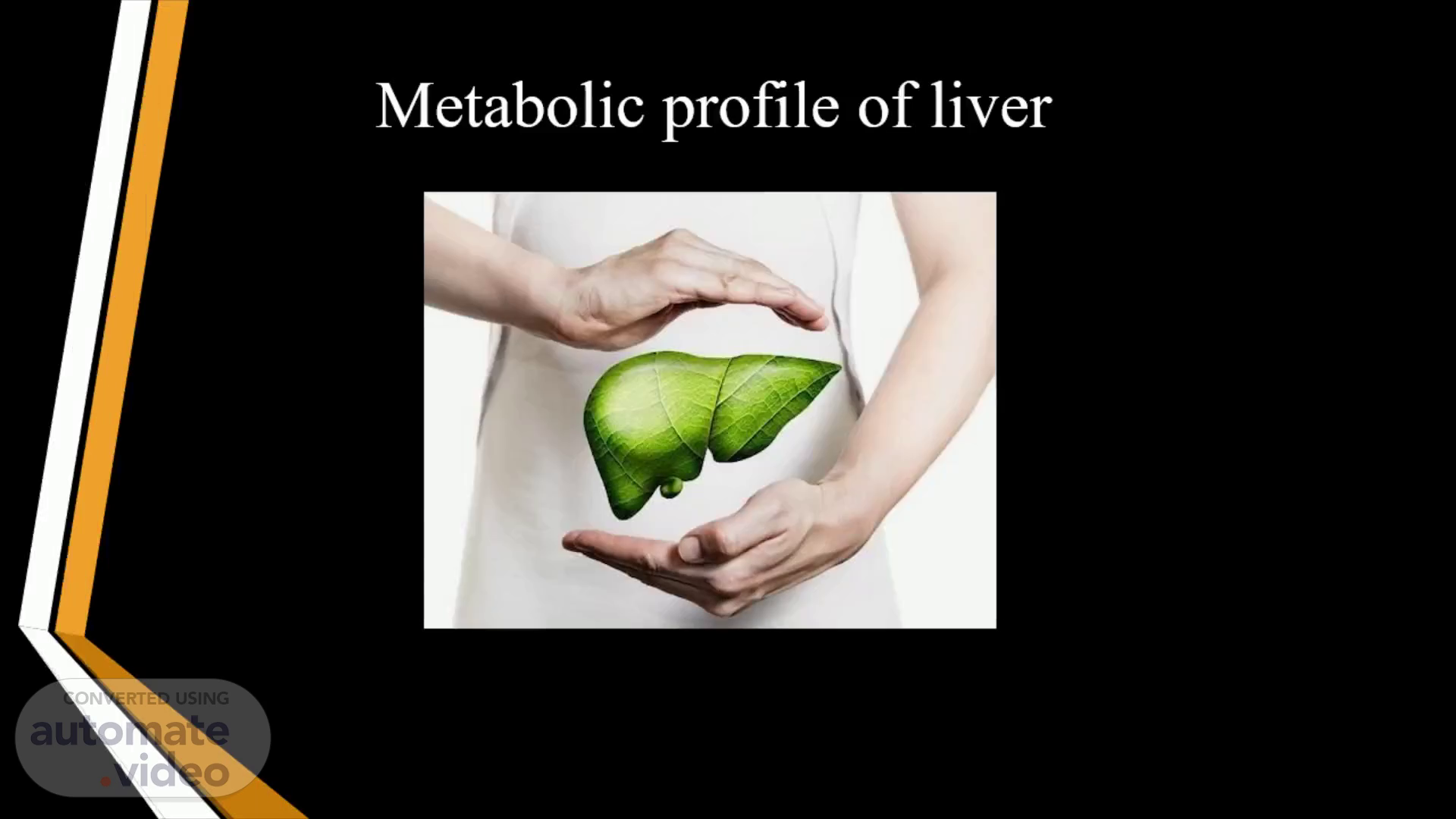
Page 1 (0s)
Metabolic profile of liver. Sivasankari S 21MBC037.
Page 2 (7s)
J.
Page 3 (12s)
LIVER. The liver is the largest solid organ in the body..
Page 4 (41s)
LIVER HEPATIC ARTERY HEPATIC PORTAL VEIN 1.5 CENTRAL VEIN CAUDATE LOBE LEFT LOBE O RIGHT LOBE HEPATIC LOBULE QUADRATE LOBE.
Page 5 (53s)
fat. Liver processes and distributes nutrients. During digestion in mammals, the three main classes such as,.
Page 6 (1m 16s)
The portal vein is a direct route from the digestive organ to the liver..
Page 7 (1m 24s)
Hepatocytes Storage of glucose,vitamins and iron Breakdown of metabolic waste products,drugs and toxins Production of plasma, proteins and bile. metabolism of fat, carbohydrate and protein..
Page 8 (1m 41s)
The liver has a remarkable metabolic flexibility . For example, when the diet is rich in protein ,hepatocytes supply themselves with high level of enzymes for aminoacid catabolism and gluconeogenesis. Within hours after a shift to a carbohydrate diet , the level of these enzymes begin to drop and the hepatocytes increase their synthesis of enzymes essential to carbohydrate metabolism and fat synthesis..
Page 9 (2m 1s)
Glucose 6-phosphate. Blood glucose. CARBOHYDRATE METABOLISM.
Page 10 (2m 26s)
AMINOACID METABOLISM. Aminoacids. Liver proteins.
Page 11 (3m 12s)
METABOLISM OF FATTYACIDS IN LIVER. Fatty acids. Liver lipids.
Page 12 (3m 47s)
Conclusion. The liver thus serves as a the body’s distribution center,exporting nutrients in the correct proportions to other organs and processing excess aminoacids into urea and other products to be disposed of by the kidney . Certain nutrients are stored in the liver, including fe ions and vitamin A. The liver also detoxifies foreign organic compouds , such as drugs ,food additives,preservatives , and other possibly harmful agents with no food value..
Page 13 (4m 0s)
References. David L.Nelson and Michael M.Cox.,” leninger principles of biochemistry, 5 th edition , W.H.Freeman and company , NewYork houndills,England , 2018 https :||www.medicinenet.com|liver anatomy and function |article.htm https:|| columbiasurgery.org|liver|liver-and its functions https:||www.vivo.colostate.edu..
Page 14 (4m 3s)
Thank you.